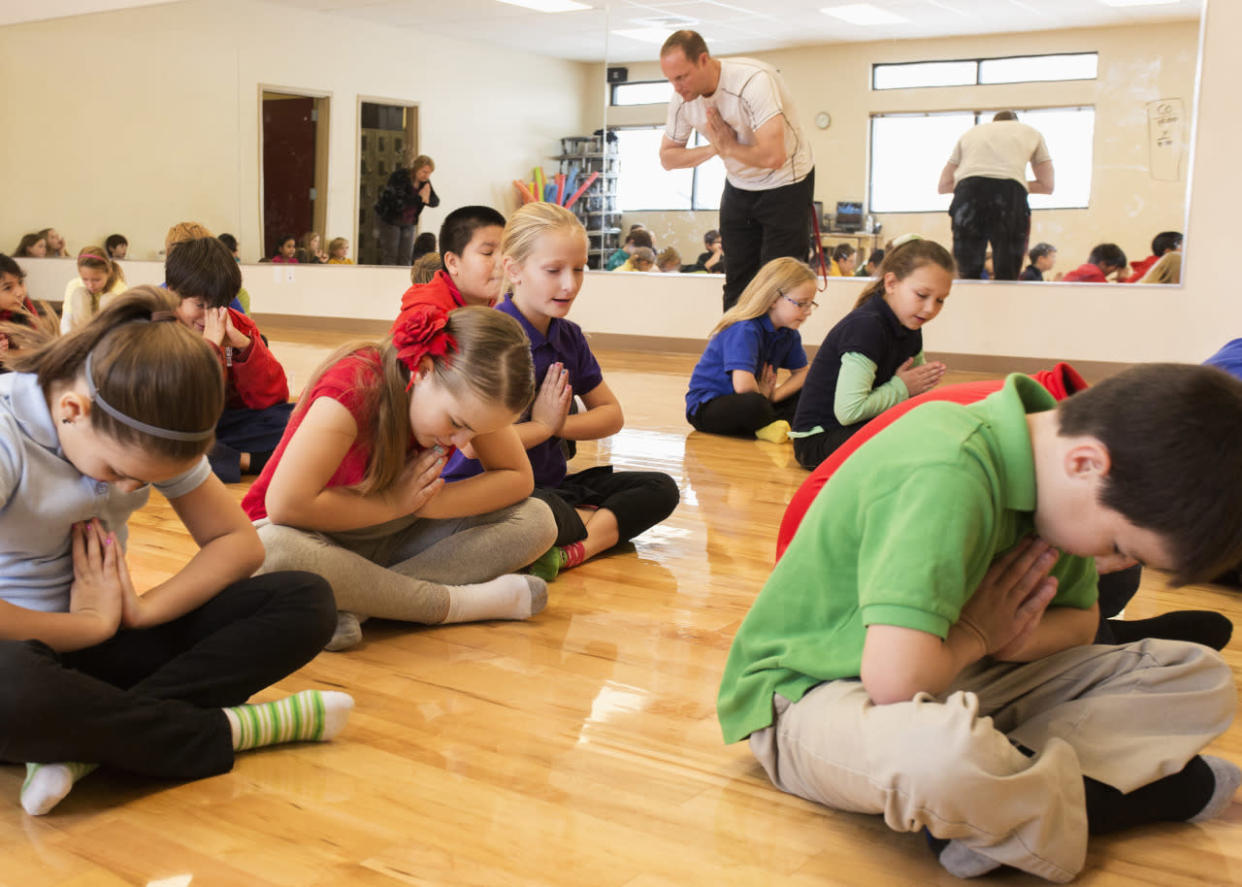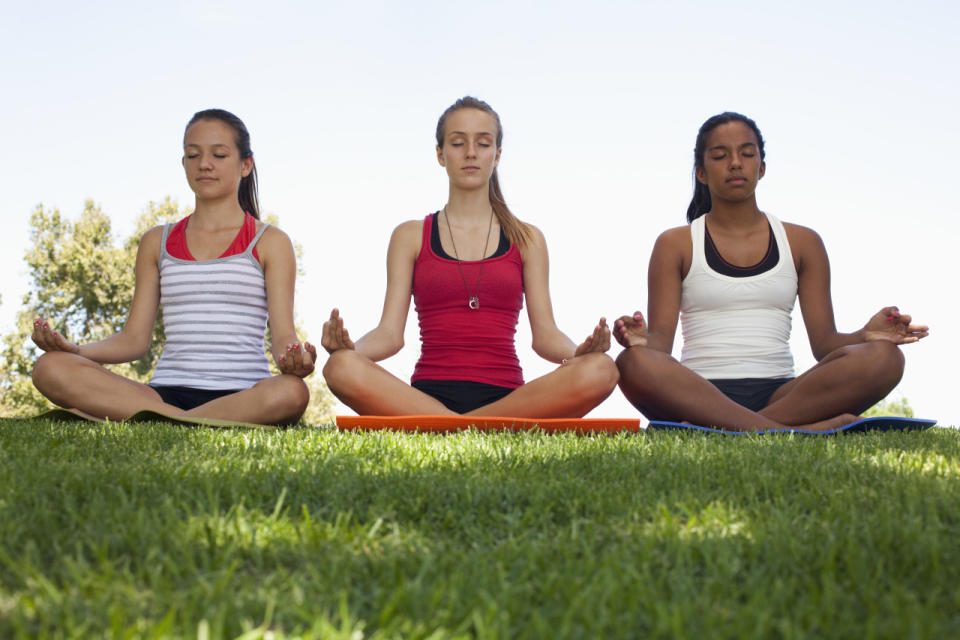How mindfulness in schools helps kids cope with stress

(All images via Getty)
At Sheldon-Williams Collegiate in Regina, the week starts with Mindful Mondays: high-school students spend time one morning a week focused on meditation, yoga, aspirations, and deep breathing instead of the usual teen stressors of tests, social media, and university applications.
Similar programs are popping up at schools across the country, from kindergarten through high school. Educators are incorporating some form of mindfulness practice—yoga, meditation, positive affirmations, gratitude journals—into the day along with tests and lessons. And yoga studios and meditation centres are offering classes for kids from St. John’s to Vancouver.
Research shows that even small measures to introduce students to the benefits of practices like mediation or calming breathing can have a positive effect on their studies—and their stress levels.
Also see: Pediatrician calls out anti-vac on bogus ‘big pharma’ theory
“We’ve studied introducing integrative therapies in three different clinical studies in high schools,” Dr. Nada Milosavljevic, director of the integrative health program at Massachusetts General Hospital, tells Yahoo Canada Style. “Everything from acupuncture to aromatherapy to sound therapy, and we’re providing education as well.“
Milosavljevic’s research was aimed at high-school students dealing with anxiety and stress and results published about a year ago showed that mindfulness-focused therapies made a big difference.
“For the students who were going through the program we found that we were able to decrease their anxiety symptoms by over a third, which was pretty amazing,” Milosavljevic says.
Adolescents, who increasingly deal with a variety of stressors both in and out of the classroom. Academic stressors are most serious for a third of Grade 7 students, according to a survey of 900 of them done by the Canadian Education Association research team, followed by family conflicts (31 per cent), peer conflicts (21 per cent), and conflict between parents (14 per cent).
In that same survey, some of the same adolescents reported dealing with stress in unhealthy ways including drug and alcohol use or engaging in unprotected sex (7 per cent), self harming behaviours like cutting or burning (7 per cent), or playing video games to excess (6 per cent).
This gives a sense of both the stressors kids face and the importance of teaching them positive ways to manage the stress and anxiety that can result.
“They’re very stressed out. They have a lot of pressures from a lot of different sources,” Milosavljevic says. “It’s hard for them to really unplug and induce a sense of calm."

The good news is that the students she worked with in her research were open to learning how to manage that stress with new approaches including yoga poses, pressure points, and meditation practices, Milosavljevic says.
“Surprisingly they were willing to adopt them very readily,” Milosavljevic says. “A lot of them started to use these treatments on their own, which was wonderful to see."
But mindfulness has a place for younger students as well, Kathy Walsh, a mindfulness expert and author, tells Yahoo Canada Style. Her mindfulness program for children, Peace Place for Kids, teaches children about positive thinking and gratitude along with mindfulness practices.
“When I’m with the kids in person, I do a lot about feelings your feelings and I notice that the kids open up a lot and tell me about things that are hurting them or making them feel sad,” Walsh says. “Every day is so busy that they don’t have a space in their lives to feel their feelings."
Walsh has been meditating daily herself for 30 years and passed the practices along to her own children before realizing that she should share them more widely. Having begun her work before mindfulness was a buzz word, she’s gratified to see the way programs like hers have caught on in recent years.
“I’m excited that it’s finally catching on,” Walsh says. “Most of the people I deal with are so greatful that somebody’s doing this. But it is a new beginning and I’m sure there’s people that are not understanding the value of it yet."
Also see: Alberta photographer celebrates the beauty of motherhood in photo series
For parents and educators who do want to introduce similar practices for their children, a specialized program isn’t required. Both Walsh and Milosavljevic say that there are many simple ways to introduce mindful practices like yoga, meditation, and calming breathing into the day, even with just a few minutes to spare.
Focused breathing with the intention of bringing peaceful feelings inward and positive feelings outward can make a big difference in just a few minutes, Walsh says, as can practices like writing in a gratitude journal or ending the school day with positive affirmations.
Technology can also play a role in reaching a generation already comfortable with digital solutions to problems. Milosavljevic’s company Sage Tonic offers an app focused on the different senses that gives quick tips for relaxation, such as pressure points to use and relaxing poses to hold. Headspace is one of a variety of new meditation apps that focuses on practicing for just a few minutes a day and guides users through the process, and Cosmic Kids teaches younger children yoga and meditation in a colourful online environment.
Children easily see the benefits of these efforts, Walsh says, and she hopes to impress upon parents and teachers that time spent on deep breathing and yoga poses has value in and out of the classroom.
“They’re learning tools. they’re learning real techniques,” Walsh says. “This isn’t airy-fairy stuff.”
What do you think? Let us know by tweeting to @YahooStyleCA.


